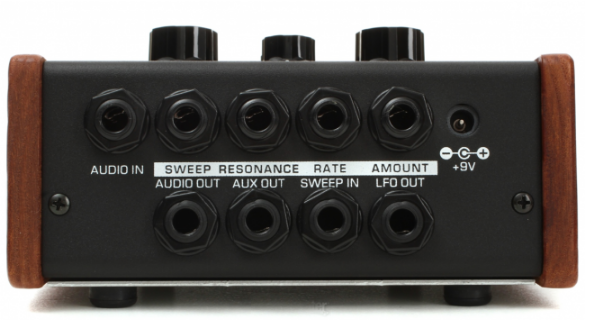Products Category
- FM Transmitter
- 0-50w 50w-1000w 2kw-10kw 10kw+
- TV Transmitter
- 0-50w 50-1kw 2kw-10kw
- FM Antenna
- TV Antenna
- Antenna Accessory
- Cable Connector Power Splitter Dummy Load
- RF Transistor
- Power Supply
- Audio Equipments
- DTV Front End Equipment
- Link System
- STL system Microwave Link system
- FM Radio
- Power Meter
- Other Products
- Special for Coronavirus
Products Tags
Fmuser Sites
- es.fmuser.net
- it.fmuser.net
- fr.fmuser.net
- de.fmuser.net
- af.fmuser.net ->Afrikaans
- sq.fmuser.net ->Albanian
- ar.fmuser.net ->Arabic
- hy.fmuser.net ->Armenian
- az.fmuser.net ->Azerbaijani
- eu.fmuser.net ->Basque
- be.fmuser.net ->Belarusian
- bg.fmuser.net ->Bulgarian
- ca.fmuser.net ->Catalan
- zh-CN.fmuser.net ->Chinese (Simplified)
- zh-TW.fmuser.net ->Chinese (Traditional)
- hr.fmuser.net ->Croatian
- cs.fmuser.net ->Czech
- da.fmuser.net ->Danish
- nl.fmuser.net ->Dutch
- et.fmuser.net ->Estonian
- tl.fmuser.net ->Filipino
- fi.fmuser.net ->Finnish
- fr.fmuser.net ->French
- gl.fmuser.net ->Galician
- ka.fmuser.net ->Georgian
- de.fmuser.net ->German
- el.fmuser.net ->Greek
- ht.fmuser.net ->Haitian Creole
- iw.fmuser.net ->Hebrew
- hi.fmuser.net ->Hindi
- hu.fmuser.net ->Hungarian
- is.fmuser.net ->Icelandic
- id.fmuser.net ->Indonesian
- ga.fmuser.net ->Irish
- it.fmuser.net ->Italian
- ja.fmuser.net ->Japanese
- ko.fmuser.net ->Korean
- lv.fmuser.net ->Latvian
- lt.fmuser.net ->Lithuanian
- mk.fmuser.net ->Macedonian
- ms.fmuser.net ->Malay
- mt.fmuser.net ->Maltese
- no.fmuser.net ->Norwegian
- fa.fmuser.net ->Persian
- pl.fmuser.net ->Polish
- pt.fmuser.net ->Portuguese
- ro.fmuser.net ->Romanian
- ru.fmuser.net ->Russian
- sr.fmuser.net ->Serbian
- sk.fmuser.net ->Slovak
- sl.fmuser.net ->Slovenian
- es.fmuser.net ->Spanish
- sw.fmuser.net ->Swahili
- sv.fmuser.net ->Swedish
- th.fmuser.net ->Thai
- tr.fmuser.net ->Turkish
- uk.fmuser.net ->Ukrainian
- ur.fmuser.net ->Urdu
- vi.fmuser.net ->Vietnamese
- cy.fmuser.net ->Welsh
- yi.fmuser.net ->Yiddish
Why do some MIDI synths have CV/Gate jacks?
Date:2020/3/7 10:12:51 Hits:

Q: Why do some MIDI synthesizers and effects have CV/Gate jacks?
A: Back before MIDI, the only way for one device to control another was through the use of control voltage inputs and outputs, and gate (trigger) jacks. These connections could control everything from the pitch of a synthesizer (using varying volts or Hertz per volt, depending on the instrument), to the filters, to the gate (note on/off) of a synthesizer. However, with the advent of MIDI in 1983, these things could be controlled digitally, with a much higher accuracy, and multiple commands could be interpreted simultaneously, allowing for higher polyphony and multiple filters to be controlled far more easily.
But that’s not the end of the story. There has been a slow but dedicated resurgence in the use of good old analog control voltage and gate jacks to control analog filters, analog sequencers, and the like. One reason is that MIDI, while having many advantages, is limited in its resolution. The basic MIDI control change message is limited to 7-bits (128 possible steps). There are ways to get more resolution out of MIDI than this, of course, but depending on the sound and the implementation, care must be taken to avoid “zipper noise” from stepping. Being analog, control voltage and gates never suffer from “stair stepping” or “zipper noise.”
Even modern analog and analog/digital hybrid instruments have added CV/gate interfaces so as to take advantage of the infinite possibilities. Not only does using these interfaces eliminate stair stepping and zipper noise, but the possibilities of having voltage control an analog process give the performer a way to turn their instrument into a “semi-modular” beast, imitating those older modular walls of synthesizers. Those modern instruments are truly the best of both worlds, giving the performer all the convenience and control of modern digital control along with the analog options of the old CV/gate systems.
Leave a message
Message List
Comments Loading...





